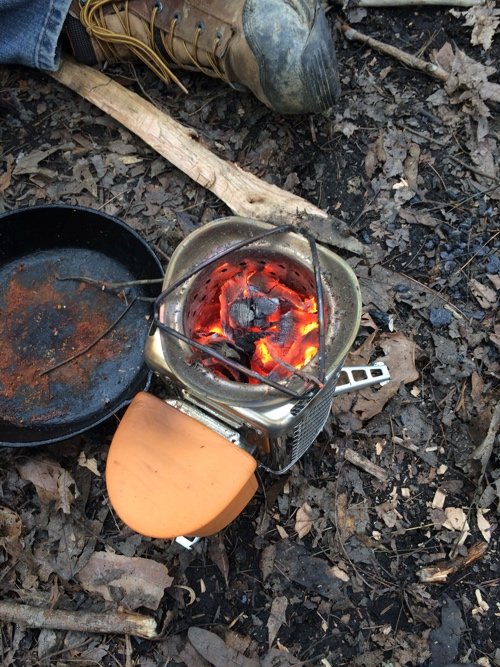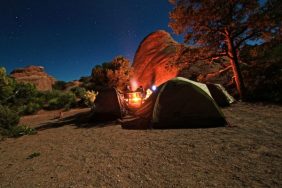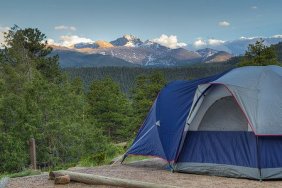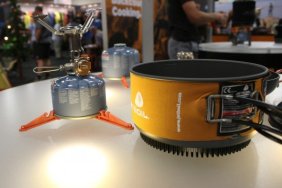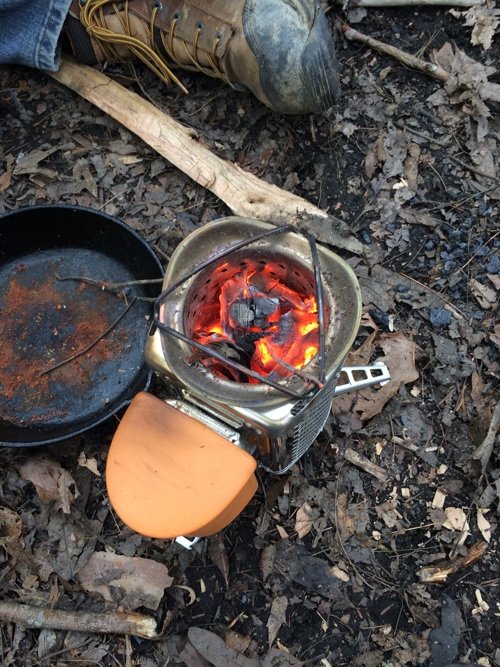
The BioLite Camp Stove is an interesting concept. It’s a camp stove that runs off biomass with the power of white gas and can also charge your smartphone and other devices. While the camp stove seems to perform well in light-weight use, based on a promotional video, we set out to find how it would hold up on a serious backpacking trip, and it definitely impressed.
I recently had the opportunity to thoroughly test a BioLite in Kentucky’s Red River Gorge. Part of the Daniel Boone National Forest, Red River Gorge is 29,000 acres of some of the world’s best rock climbing. Open only to foot traffic, the Gorge is a remote backpacking destination where properly functioning equipment is a must – especially in spring when overnight temperatures can fall to uncomfortable levels.
At the heart of the BioLite, and what sets it apart from other wood-burning camp stoves, is the power pack which houses a fan assembly. The pack aligns with a large hole in the side of the cylindrical stove and the pack’s fan assembly circulates air throughout the stove, stoking the fire. Thanks to a copper heat probe that penetrates the stove’s interior, and a thermoelectric generator inside the pack, the heat from the fire keeps the battery recharged. As long as you use the stove at least once every six months, you should never need to recharge the internal battery.
Right away, the BioLite impressed with how easy it is to start a fire. Take some bark, twigs and sticks and within seconds you have a fire. Ten seconds after lighting your tinder, you activate the fan in the pack. Once the fire heats up, you can turn the fan on high, greatly increasing the heat output of the fire. Once enough heat has been generated, a green light on the side of the pack illuminates, indicating that the battery pack is sufficiently charged to start charging other devices.
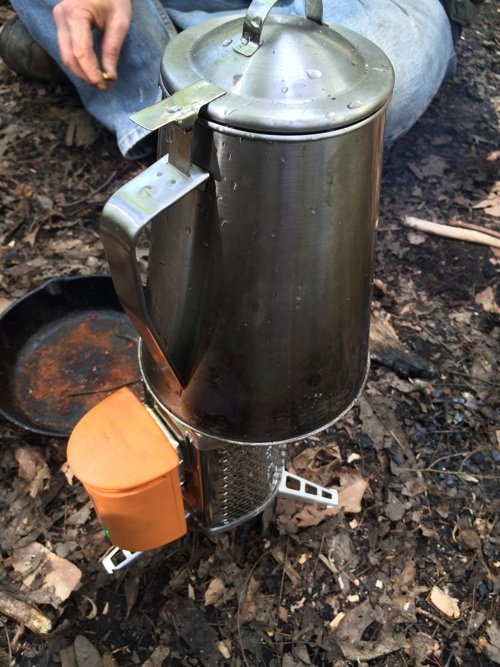 Over the course of my weekend backpacking trip, the BioLite met almost all expectations and exceeded most. Never once did I have any issue starting a fire, with most fires hot enough to begin cooking food or boiling water within a minute or two. This included using a large, ten-cup camp coffee pot.
Over the course of my weekend backpacking trip, the BioLite met almost all expectations and exceeded most. Never once did I have any issue starting a fire, with most fires hot enough to begin cooking food or boiling water within a minute or two. This included using a large, ten-cup camp coffee pot.
A major benefit of the BioLite’s design is how efficient it is. The entire month prior to my backpacking trip had been an extremely wet one, filled with thunderstorms, rain showers and flooding. As a result, there was very little dry wood the weekend of the trip. Even so, using what little dry wood was available, the BioLite was able to continue burning even when somewhat damp sticks were added to the mix.
The only two issues I experienced were charging and using certain cookware. The charging feature of the stove was never a main attraction for me. When I go backpacking, it’s usually to get away from technology and modern life. Therefore, I have no desire to extensively use my phone and was only interested in the stove’s charging ability for use in an emergency situation. With those expectations in mind, I was relatively happy with the stove’s charging rate. While cooking for approximately 20 minutes, the stove raised my iPhone’s 5S’ battery charge by nine percent. Not a spectacular charge rate, but definitely sufficient for my needs. More demanding users, however, may be somewhat disappointed.
The second issue is related to the type of cookware I used. The three cooking utensils I used were a small Stanley pot, a small cast iron skillet and the aforementioned large coffee pot. Neither the Stanley pot or the cast iron skillet posed a problem, even though the latter was quite a bit wider in diameter than the stove. The coffee pot, on the other hand, has a lip encircling the bottom of it that redirected heat downwards toward the battery pack. Although no damage was done, other than a little soot discoloration visible in the above picture, it was disconcerting. Mid-way through the trip I stopped using the pot and experienced no further issues. Again, the problem was not the diameter of the pot, as the cast iron skillet was similar in diameter and did not reflect the heat, but rather the downward facing lip on the bottom of the pot. Any pots, pans or skillets should be flat-bottomed to prevent this issue.
After a weekend of depending on the BioLite, I am extremely impressed with its performance. It’s a well-designed product that lives up to its advertising. It allows you to go virtually anywhere, confident that you’ll be able to generate heat and cook food with whatever biomass is available – even if that biomass is not the best quality.
The BioLite camp stove is available at REI for $129.
